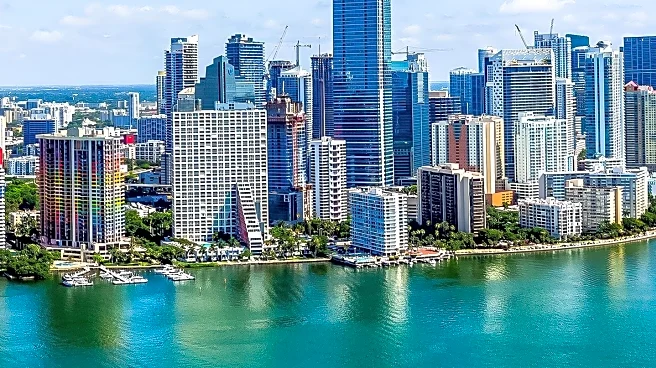What is the story about?
What's Happening?
A recent analysis reveals that the world's major cities have experienced a 25% increase in extremely hot days since the 1990s. The study, conducted by the International Institute for Environment and Development (IIED), found that the number of days with temperatures exceeding 35°C has risen significantly in 43 of the most populous capital cities. This trend is attributed to global heating caused by fossil fuel emissions, which continue to rise despite the need for significant reductions to meet climate targets. The analysis highlights the urgent need for cities to implement measures to protect residents from the adverse effects of extreme heat.
Why It's Important?
The increase in extremely hot days poses significant health risks, particularly for vulnerable populations such as the elderly and those living in low-income or unplanned communities. The urban heat island effect exacerbates these conditions, leading to higher mortality rates and increased strain on healthcare systems. The findings underscore the importance of climate adaptation strategies, including improved urban planning, enhanced building insulation, and the creation of green spaces to mitigate heat impacts. As cities continue to grow, addressing the challenges of extreme heat will be critical to ensuring the well-being and resilience of urban populations.
What's Next?
Cities worldwide are likely to face increasing pressure to implement effective heat mitigation strategies. This may involve investing in infrastructure improvements, such as cooling centers and shaded areas, as well as developing early-warning systems for heatwaves. International cooperation and knowledge sharing will be essential to address the global nature of the climate crisis. Policymakers and urban planners will need to prioritize climate resilience in their agendas to protect citizens and reduce the long-term impacts of extreme heat.
AI Generated Content
Do you find this article useful?













